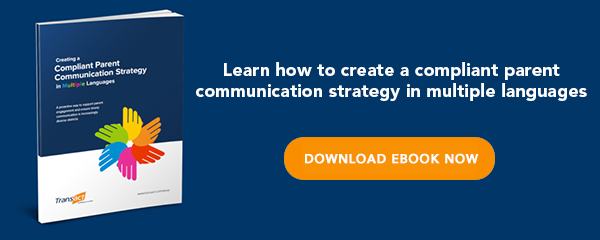The onset of the Coronavirus (COVID-19) pandemic caused school closures across the nation. The response for many districts is a move to an online or distance learning environment, but the elimination of face-to-face interaction between teachers and students is creating new challenges in parent communications and exacerbating gaps in equitable access for all students, especially those that do not have access to laptops and those that are English Learners.
Many schools don't have a standardized methodology for delivering notifications to parents, which often causes confusion and extra work for parents who must search in multiple places to find out what their children should be doing to keep up with their schoolwork. For English Learners, migrant families and other communities within a school district, the confusion is exacerbated when the software or communications that are available from the district are either in English-only or heavily based in desktop computers or email.
Because of the challenges in finding software that is friendly for limited-English proficiency speakers and families without access to computers, schools still rely heavily on students to carry home important communications that keep parents informed regarding school and district activities, important meetings, and other relevant information. Sometimes these communications are required by state or federal law (including Civil Rights laws). With teachers no longer interacting face-to-face with students, the ability for teachers to send notifications home to parents in this manner is no longer viable, and parents lack the ability to sign for or pay for school activities.
As schools and districts attempt to communicate during shelter-in-place methods, parents are scrambling to access and learn new platforms and communication methodology. The lesson is loud and clear: schools and districts must adjust and determine a methodology for delivering parent communications in a distance learning environment.
TransACT Communications uniquely helps meet the need to deliver parent communications in a consistent manner that saves time and resources and is not dependent on a hand delivery system:
- Allow parents to receive information on the device of their choice (phone, tablet or computer)
- Collect digital signatures
- Collect fees for school activities without storing credit card information, while maintaining compliance with district fiscal policies
- Distribute expertly written school-to-home guidance in alignment with ESSA, Section 504, IDEA
- Automate approval workflows for school-to-home communications
TransACT has four Parent Notices Collections, totaling approximately 300 documents that help meet compliance requirements related to state, federal, and Civil Rights laws. These standardized notices are available in English and 26+ high-priority languages, which helps to meet the Civil Rights requirement to provide communications in a language parents can understand.




